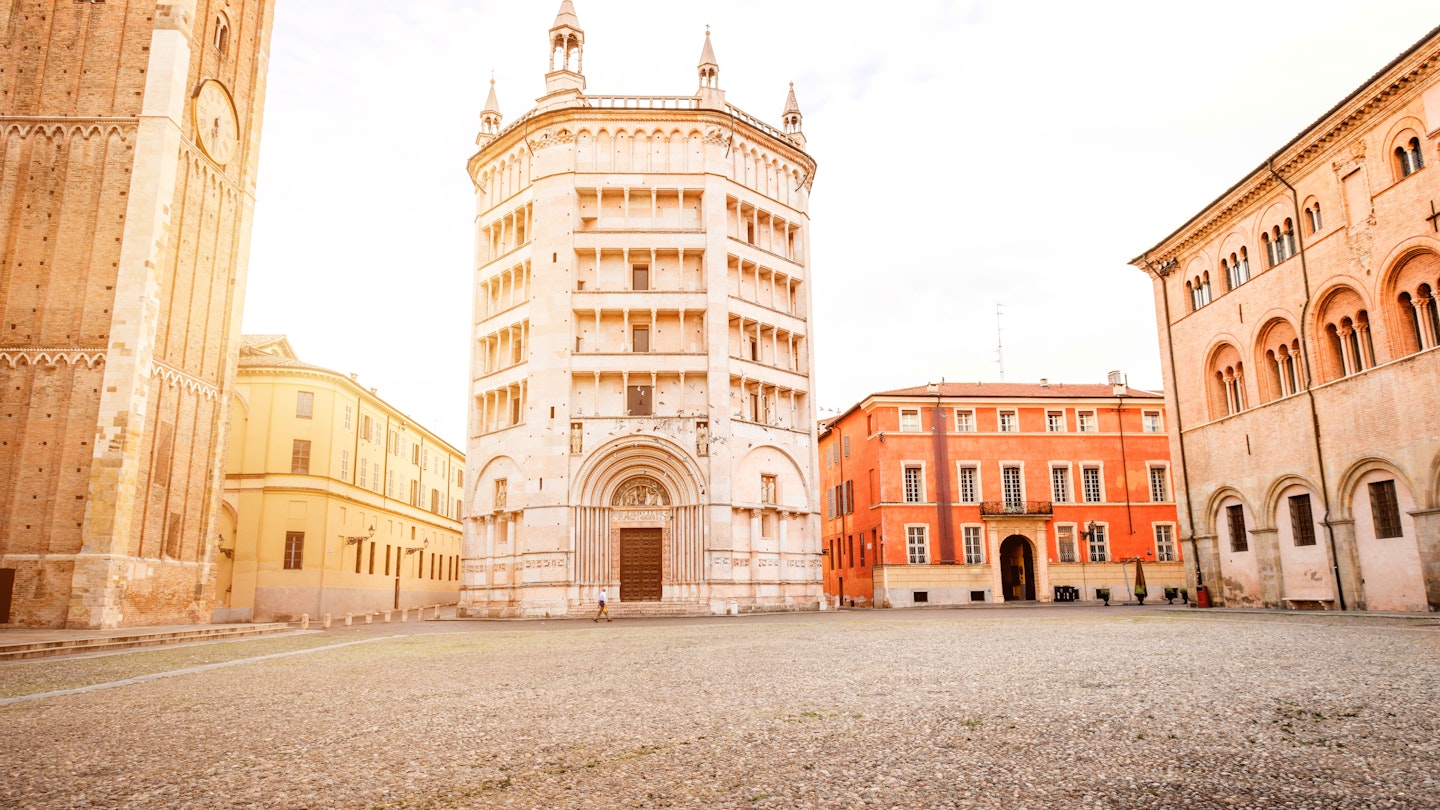Parma is widely known for two significant aspects: its unmatched cuisine—wheels of Parmigiano and cured meats fill shop windows—and the master opera composer, Verdi. The city, located in the Emilia-Romagna region, might be outshone by the more famous Bologna. However, Parma has held an important position in Italy’s political and cultural scene for centuries, linked to the legacies of influential families such as the Farnese and Napoleon’s French Empire.

Finally nominated as the 2020 Italian Capital of Culture, the city showcases masterful monuments and “Parma yellow” buildings. As an architect who grew up in Parma, I had the privilege of walking by buildings every day that I had studied in my textbooks. Here’s how you can experience the city’s rich legacy for yourself.
Roman Era
Walking along the city center’s Strada Repubblica, I wonder how many of those around me realize this is a modern section of the Via Aemilia, a Roman lifeline completed in 187 BC. Beneath the modern asphalt, some parts of the original Roman road still exist. Further west lies the Ponte di Mezzo (Middle Bridge) alongside the recently restored Ponte Romano (Roman Bridge). This structure features two semi-circular arches, with nine others buried beneath, solid yet a testament to its age.

Middle Ages
One of Europe’s most significant medieval monuments is the Battistero di Parma (the city’s Baptistery), designed by the renowned Benedetto Antelami. This structure marks the transition from the Romanesque to the Gothic style. The unique octagonal building—featuring a remarkable pink Verona marble exterior—has fascinated architecture enthusiasts throughout history. While the exterior captivates visitors, the interior is adorned with stunning artwork and a beautifully frescoed cupola.
Renaissance
Experience the Renaissance at Parma’s 16th-century Oratorio di Saint’Ilario (the Oratory of Saint Ilario), Patron of Parma. This chapel may appear unassuming from the outside, yet it is rich in artistic heritage inside. The Oratory leads to the porticos along Strada Massimo D’Azeglio, part of the Old Hospital complex. This site stands as a rare example of centuries-old hospital architecture, characterized by unusually high ceilings, spacious rooms, and tall windows. Restoration efforts are underway to transform the Old Hospital into a new cultural gallery.

Between Renaissance and Baroque
The Chiesa della Steccata, positioned near the main square, serves as the headquarters of the Sacred Military Constantinian Order of Saint George. This structure, caught between the Renaissance and Baroque styles, displays a solid and elegant exterior that stands in stark contrast with its masterful artistic displays inside. Renowned artist Parmigianino contributed extensively to this site. The crypt, commissioned by Marie Louise, Napoleon’s second wife, was designed to host the tombs of the Farnese and House Bourbon-Parma nobles, including the white sepulcher of Carlo Hugo of House of Bourbon-Parma—a direct descendant of Louis XIV of France.
Right behind the Cathedral lies the complex of San Giovanni Evangelista. This Benedictine church and its convent were among Italy’s significant manuscript copying centers during the 1500s. An original tome can be seen in the library, accessible via a narrow, dark staircase. Moreover, the church’s interior is breathtakingly decorated; features include a young Parmigianino’s work, alongside the masterpiece “Vision of St. John the Evangelist at Patmos” by Correggio, which can only be viewed from behind the altar. This arrangement was intended for priests and monks in the choir to observe the Evangelist’s gaze towards Christ while engaged in prayer and hymn.

Baroque
The Sant’Antonio Abate church, built in 1766 by the famous architect Bibiena, showcases a distinct type of Baroque architecture. Its interior features an unusual double-vaulted ceiling that creates a spectacular effect: the lower vault boasts rich decorations, while openings resembling windows exalt the heavenly frescoes of the higher vault, ultimately providing a mesmerizing view of the sky.
Why is Parma the 2020 Italian Capital of Culture?
Parma has played a crucial role throughout history—both politically and culturally. Furthermore, the city offers unparalleled cuisine at its numerous historic trattorie and restaurants. Notably, Parma is easily accessible both nationally and internationally, while its compact historic center is user-friendly for pedestrians and cyclists alike.





